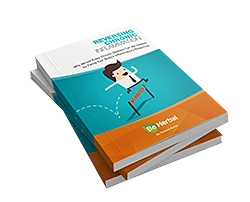What Exactly is Prana?
Prana and pranayama are two different terms, familiar to yogis, and meditators, but often lost to the general public. They shouldn’t be, though, because these terms are essential to experiencing greater levels of energy, a calmer mind and absolutely vital health.
Prana comes from the Sanskrit language meaning the original life force. Some believe it is something separate from ourselves, or merely call it “the breath”, but ancient yogic saints and sages understood it to be alive. Prana is not separate from us, but runs through us and creates us, giving continuity between all incarnations we experience. If you want to just concentrate on what prana can do for you in this life, that’s fine too, as your awareness of it and the cultivation of prana will change your experience of health for the better.
The reason the ancient sages expressed prana as consciousness, or an alive, active force is because the breath is so intimately tied to how we think and feel. Our thoughts and emotions are affected by the breath and vice versa. When we are forlorn, we sigh. When we are excited, we breathe quickly. When angry, our breath becomes forceful and jagged. When we are feeling peaceful, our breath is deep and rhythmic, and for most of us, when we are stressed, we either hold the breath—cutting off our life force completely from our physical bodies—or we breathe very jaggedly and shallowly, resulting in a whole cascade of hormonal changes, along with a physiological domino effect that is nothing more than astounding.
The ‘pra’ of prana comes from a root word meaning ‘constant.’ The ‘an’ of prana comes from a root word meaning ‘movement.’ As you might surmise, constant movement very aptly describe the breath, as well as the primordial energy. Prana is responsible for our very existence, starting from the womb, for the warmth that keeps us comfortable, to the maintenance of the body through its various functions including assimilating nutrients, digestion, respiration and so on.
Pranayama
Pranayama is the science of cultivating prana. In yogic practice, we learn how to breathe properly in order to remove the impurities from the breath, and therefore, the mind. It is no mistake that one of the oldest methods of practicing meditation includes a simple focusing on the breath. When we do this one act—just giving attention to a process that usually happens without any effort—we can start to first notice how unevenly or shallowly we likely are breathing. Secondly, we slow the breathing process, while also learning to extract more oxygen from every inhale.
Though there are a number of different types of breathing exercises, all meant to cultivate prana, most of them aim at increasing our lung capacity, slowing the breath, and making it more even and controlled but relaxed.
Moving Life Force Through the Nadis
In both Chinese medicine and yogic science, the subtle energy of the body is acknowledged, and the channels through which this energy flows are well documented.
In yogic science, there are said to be hundreds of thousands of subtle energy channels in the body. Nadicomes from the Sanskrit language and means channel, stream or flow. When we practice pranayama, we cleanse the nadis of unfavorable subtle energy, thus clearing the way for grosser physical functions to transpire with less stress. Similarly, the Chinese traditional system of medicine understands that there are also subtle pathways in the body along which ‘qi,’ (pronounced chi) or prana can flow. These meridians are also described as channels or vessels in the Chinese language, and are said to be responsible for the distribution of the basic life force to the entire body.
If you can image a mountain stream that normally flows unimpeded, but becomes clogged up after a storm, this is what happens to the subtle energy channels when we indulge in an unhealthy diet, we don’t move or stretch, we allow our thoughts to become stagnant or depressed, or we have a habit of breathing improperly. Our life force cannot move through us as it should. Remember, prana means ‘constant motion.’ Pranayama helps to unclog the stream, restoring our vital energy to every cell and system.
Basic Pranayama for Beginners
As previously stated, there are multiple ways of cultivating prana. Advanced yogis can take one breath and exhale for what seems to be an eternity, which is a testament to the cleanliness of their nadis, their developed lung capacity and the mindful practice of cultivating prana. For beginners, it is simplest to start to simply observe the breath at random points in the day, to really notice just how often we are breathing shallowly, or not at all!
You can start by noticing your breath every time you sit at a red light, or first thing in the morning when you wake, then again at night as you fall asleep. The next step is to start to focus on breathing correctly with the diaphragm, instead of what is called a ‘panic’ breath which arises from high in the chest.
When you inhale, allow your shoulders to stay relaxed, instead of rising into the ears. Allow the belly to expand as you take air in through the nostrils. Your tongue can rest on the upper palate behind the teeth. When you exhale, breathe out as slowly as you can through your nose, and draw your lowest belly in toward your spine. This action may seem counter-intuitive in comparison to how you normally breathe at first, but with practice, you will breathe much longer, deeper breaths.
By simply changing your breath to a deeper, more even and rhythmic pattern, you can literally rewire your brain. You will also be cleansing your nadis, and allowing your life force to rejuvenate you. Just breathe, and your health will dramatically improve.


